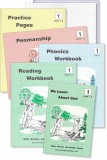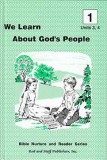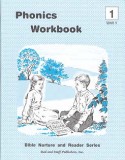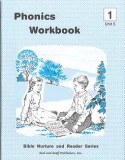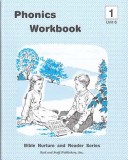Rod and Staff Reading: Grades 1 - 4
Bible Nurture and Reader Series
I want to introduce you to the most unique Reading Program I know. You can find many others that will teach your child to read, but Rod and Staff's "Bible Nurture and Readers Series" (Grades 1-4) is unique in that it imparts Bible knowledge in the teaching process, thus fulfilling God's command (Eph. 6:4). Your child will be reading biblical truth instead of "fun stuff." It is important that every child learn to read, but more important that he develop a desire for profitable reading rather than just entertainment. In this course the child is reading to learn, not just learning to read. Every child needs to develop an appetite for serious reading at an early age. "Foolishness is bound in the heart of a child" (Pr. 22:15), and we certainly do not want to encourage it with frivolous reading material. Many curriculums prioritize the fun approach and develop that mentality in their students. But most of us, by now, are quite aware that life is not fun. We can have peace and joy in the Lord and find satisfaction in our labor, but life is serious and consequential. We need to prepare our children to face the realities of living a serious and useful life. The biblical content of the reading material is what sets this program apart from the rest.
Furthermore, the "Bible Nurture and Readers Series" is academically sound. Having personally used it to teach, I can tell you that it works.
—Silas Martin, 2009
- Purpose and Plan: See More Info
-
The Bible Nurture and Reader Series has been written to teach children to read. The parents of children who learn from this series are delighted to find their first graders reading quite well already after only 4 or 5 months, and sounding out new words with surprising ease.
We have found, as other researchers have also concluded, that a strictly phonetic approach to reading hinders comprehension, whereas a strictly sight-reading approach impedes both reading and comprehension. The Bible Nurture and Reader Series uses a combination of phonics and sight-reading: the students learn to read a few words by sight immediately, thereby getting off to a prompt start in comprehension; phonics is taught from the very beginning, enabling the child to sound out words for himself.
This approach to teaching reading is employed in this series for the following reasons:
- Learning the sounds enables a child to identify most of the vocabulary words for himself. It takes no longer to learn sounds that compose words than it does to memorize whole words, and the phonetic sounds are the tools that enable the child to sound out every new word that he sees. Phonics gives the child an orderly way of learning to read. He sees that words are composed of small parts, sounded consecutively.
- Since the child is able to sound words for himself and to become an independent reader early, the phonetic method gives him a meaningful, challenging, and satisfying approach to the learning of words.
- In a classroom setting, the phonetic method makes it easier for the teacher to keep the learning progress of all the pupils in a class together. In the sight-reading approach, the children who have difficulty recognizing and remembering sight words become confused and frustrated and drop behind others in the class and are left with no means or tools with which to recover themselves.
- Phonetic sounds are more easily remembered than sight words because the child continues to use them with regularity. He is far more ready to begin the second grade after the vacation months, during which time a child usually forgets many of the sight words he has memorized, because the basic phonetic sounds are retained more easily and are more readily recalled.
- An effective study of phonetics requires disciplines necessary for the development of good habits such as good listening, concentration, diligence, perseverance, and acceptance of personal responsibility.
Developing comprehension is another objective of the series. To comprehend, children must learn to think. Many subjective-type questions have been used in the Bible Nurture and Reader Series that require the pupils to think. Few pictures are included in the readers, since comprehension is improved when pupils are allowed to form their own mental images.
Bible stories are used in these readers because they are the admonition of the Lord. Parents and teachers must share with children what God has revealed in His Word, and children must share with parents and teachers their questions and understandings. The Word is for all to know—grownups and children. As babies love milk, so children will be more apt to love the milk of the Word if they are in a healthy, spiritual home and/or school setting and are fed the pure Word of Truth.
Teacher's manuals are designed to include all the necessary help for teachers or parents who take their work seriously and who have some aptitude for teaching.
Pupil's material includes readers, reading workbooks, phonics workbooks, worksheets, printing practice, and flash cards.
Following Grade 4, see also:
View Scope and Sequence Chart. To see the table of contents and sample lessons, click on the curriculum sets below.


